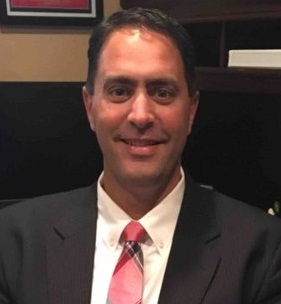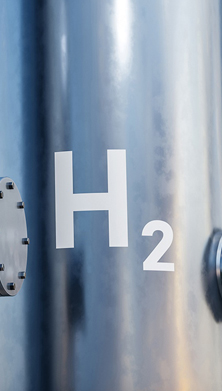This article is part of the
Global Risk Dialogue - Spring/Summer 2022
The 1 minute dialogue
- PFAS or ‘forever chemicals’ occur across industry sectors and are used in a wide range of applications
- The chemicals are persistent and bioaccumulative, taking many years or decades to break down in the environment
- As they accumulate in the body, they have been linked to a range of health problems in humans, including cancers and birth defects
- Class actions have been brought around the world and litigation is expected to continue
Waterproof jackets, burger wrappers, non-stick pans, stain-resistant carpets, and dental floss. These are just some of the products in our homes that contain per- and polyfluorinated alkyl substances, or PFAS, a family of over 4,700 synthetic chemicals ominously nicknamed the ‘forever chemicals’.
They have been in use since the 1940s and their application in industrial processes is even more wide-ranging, including chemical processing, the manufacture of semiconductors, roofing, metal coatings, grouting, sealant, electrical wiring, automotive waxes, batteries, drilling fluid, paints, and firefighting foams.
“The ability of these chemicals to repel oil, grease and water has made them highly efficient for the construction, aerospace, electronics, automotive, and other industries,” says Cindy Wilk, Global Environmental Liability Expert, Allianz Risk Consulting at AGCS. “They owe their properties to the carbon-fluorine bond they contain, which is often called the strongest in organic chemistry, hence their ‘forever chemicals’ nickname – it makes them very difficult to break down. They accumulate in humans, animals, plants, and the wider environment.”
Contaminants of concern
PFAS have been linked to a range of human health problems, including kidney cancer, testicular cancer, ulcerative colitis, thyroid disease, low birth weight, birth defects, and immunosuppression.
Their widespread use means there are many routes to PFAS exposure for humans – through food packaging, contaminated food or water, exposure at work, or domestic and cosmetic products. Drinking water is the most likely pathway, and this is often localized and associated with a source such as a factory where PFAS were produced or used in manufacturing, or an oil refinery, chemical facility, or military base where firefighting foams containing PFAS were used to extinguish fires or in training exercises.
“PFAS are water soluble and dissolve readily in soil,” says Wilk. “An industrial accident or firefighting incident can result in their release into water sources, making local communities vulnerable, but PFAS can also migrate quickly through groundwater pathways to contaminate areas far from their original source.
“How they are disposed of is of particular concern,” Wilk adds. “Improper dumping can cause PFAS to leach out into landfill facilities, which then send wastewater to public treatment plants, only for it to be discharged somewhere else – an ocean or a large body of water. It gets into the water cycle. The so-called ‘half-life’ [1] of PFAS in water – which is the time it takes to decrease by 50% – is 92 years for PFOA [perfluorooctanoic acid] and 41 years for PFOS [perfluorooctanesulfonic acid]. These two PFAS have been phased out in the USA, but they still circulate in imported products.”
The science surrounding the treatment and detection of PFAS is evolving, and the full impact on human health is not yet known. Health-related costs to society across Europe from PFAS exposure are estimated to be €52-€84bn [2] – and that is likely to be an underestimate. Most people in the United States are believed to have PFAS in their blood [3].

Remediation is costly and complex
“PFAS have such staying power that clean-up and remediation options are limited and expensive, complicated by the fact that not all PFAS are the same,” says Steve Tagert, Regional Environmental Practice Leader, North America, at AGCS. “They have varying degrees of toxicity, and accurate testing and detection is a real challenge because they can be harmful at very low levels.”
Many governments around the world have already restricted or phased out the use of certain PFAS, and this is likely to continue as more scientific information on the compounds is gathered. However, contamination from legacy PFAS and questions over the safety of alternative PFAS, which could also prove hazardous further down the line, are a cause for ongoing concern.
Several states in the US have taken steps to regulate on a patchwork basis, but recently the country’s Environmental Protection Agency (EPA) published a three-year roadmap that includes “steps to control PFAS at its sources, hold polluters accountable, ensure science-based decision making, and address the impacts on disadvantaged communities.”
The Australian state of New South Wales banned PFAS [4] in firefighting foams in 2021, except for “catastrophic or special circumstances”, following similar legislation in the states of Queensland and South Australia. In Europe, Germany, Denmark, the Netherlands, Norway, and Sweden have announced their intention to restrict PFAS to the European Chemicals Agency. Denmark banned their use in food packaging paper and cardboard in 2020.
The pressure is mounting
As public concerns grow about the impact of PFAS on human health, regulation and litigation surrounding their use is rising at such a rate they have been dubbed “the new asbestos”. According to insurtech analytics company, Praedicat, there have been, to date, over 5,000 cases [5], with over 2,000 companies named as defendants in various PFAS litigation.
The primary targets for litigation are manufacturers, and airports and military bases where firefighting foam has been used in training exercises. Many companies are trying to phase out the use of PFAS, but there could be claims for historical legacy issues.
There have been long-running, high-profile cases against chemical manufacturers in the US, and class actions in Australia focused on firefighting foams. One class action brought by an Aboriginal community against the Federal Government included a claim for ‘cultural loss’ [6] because of the community’s particularly close connection with the land.
Cases like these are thought to be just the beginning.
“Increasing regulation in the US is going to include reporting requirements from companies, based on testing of their wastewater effluent and disclosures on what they use in their processes,” says Tagert. “Up until now, there has been very little information available on this. In the US, once the EPA finalizes its clean-up standards, there will be more data in the public domain to use against companies, and this will lead to increased claim activity. In addition, the number of PFAS subject to regulation will probably increase over time. Most litigation has been focused on the producers of PFAS and firefighting foams, but we expect it to expand to secondary users of the chemicals in future.”
As well as sky-high liability costs and risks to their reputation, companies also face considerable financial risks in terms of the high cost of remediation. “A wastewater treatment plant, for example, may not have known about the presence of PFAS in its wastewater and wouldn’t have had the technology to treat it, resulting in significant capital expenses,” says Tagert. “They could then sue a manufacturer that discharged the PFAS for costs related to this. As regulations become more stringent, we expect the investigation and remediation or treatment costs to increase substantially.”
How can you mitigate against PFAS?

- Stop using PFAS in your processes where possible and find a safer alternative
- Consider switching to PFAS-free firefighting foams
- Identify where PFAS are used or produced in your operations and identify their potential impacts
- Investigate whether PFAS have ever been used on your site, including before purchasing, in order to determine any liability for past actions on that facility
- Determine whether PFAS have been used on neighboring or nearby sites
- Consult specialist risk experts to assess any current exposure if you work in the aviation or oil and gas industry, where PFAS may still be in use
- Assess any existing PFAS contamination with specialist risk consultants and work with them to find solutions to remediate this
- Check with your insurer to determine the extent and scope of your environmental liability coverage.
References
[1] Cooperative Research Centre for Contamination Assessment and Remediation of the Environment, Technical Report series, no. 42, A Human Health Review of PFOS and PFOA, August 2016
[2] European Environment Agency, Emerging Chemical Risks in Europe — ‘PFAS’, December 12, 2019
[3] ATSDR (Agency for Toxic Substances and Disease Registry), PFAS in the US Population
[4] Sydney Morning Herald, ‘The Product is Dangerous’: NSW Moves to Ban Toxic Firefighting Chemical, March 1, 2021
[5] The Insurer, Praedicat’s Reville: PFAS the Biggest Emerging Risk Facing Casualty Carriers, February 22, 2022
[6] ABC News, PFAS Contamination Class Action Filed by Jervis Bay Community for Cultural Loss, February 2, 2021
Pictures: Adobe Stock
Our experts
Annual survey identifying business risks
Allianz Risk Barometer

Top 3 business risks in Chemicals, Pharmaceuticals and Biopharma in 2023
- Business interruption (54%) - 2022 rank: 1 (73%)
- Cyber incidents (30%) - 2022 rank: 2 (42%)
- Energy crisis (26%) - NEW
Newsletter
Keep up to date on all news and insights from AGCS

















